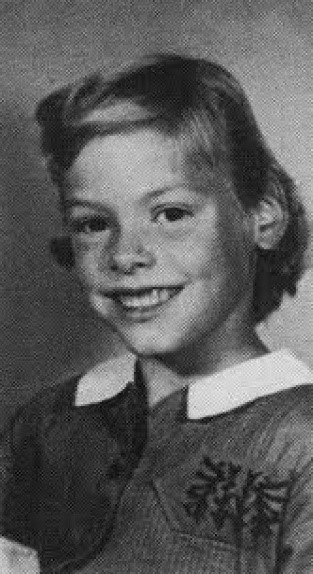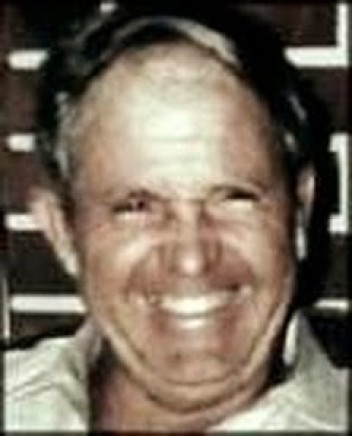Entry #1: An evaluation of the film, Monster and it’s depiction of Aileen Wuornos
Aileen Wuornos is a household name, especially in Hollywood. From the

portrayal of Aileen in the fifth season of the television show American Horror Story, to countless documentaries made about her life, it seems America cannot get enough of the nation’s first female serial killer. Hollywood portrays Aileen as a ravenous, blood seeking killer but is this depiction really accurate? It is true that Wuornos shot and killed seven Florida men at point blank range from 1989-1990. All appearing to be committed during a robbery. However according to Aileen, all of the murders were acts of self-defense.
Monster, one of the many films based on the events of Wuornos’ life, paints a clear picture of her as a an emotionally unstable career hooker, a deeply devoted girlfriend, and a victim of flashbacks which could be associated with Post Traumatic Stress Syndrome (PTSD). With her father committing suicide while in prison for child molestation, and having been abandoned by her mother, Aileen and her brother were left to be raised by their alcoholic grandmother and physically violent grandfather (Biography, 2015). Having suffered sexual abuse at the hands of her grandfather and eventually confessing to having sexual relations with her brother which left Aileen pregnant when she was a teenager, it is clear that Wuornos had a traumatic childhood (Biography, 2015). However, none of these mitigating factors were depicted in the film Monster. The

only event that was depicted was an emotional scene in which Aileen is knocked out, tied up, and raped before she is able to break free, reach into her purse and shoot her rapist. It is this instance that is used to explain Wuronos’ first murder. The film first depicts Aileen’s crimes as the result of a PTSD flashback of her prior rape and assault, consequently causing the murder of her first victim that appears to be the result of her mental illness. The film uses this instance to explain the motivation behind Aileen’s desire to kill the men who picked her up as a sex worker, but fails to address the underlying factors such as her childhood that may have influenced her life and possibly left her with permanent mental illness and a skewed outlook on life, and men in general.
The question then becomes; why was Aileen Wuornos executed if there was suspicion of mental illness? It is clear from the film that in the end, she did kill for the motive of money. Also, all but one of the murders were premeditated as she purposefully stood on the side of the road to attract “customers” that would be murdered and robbed at her hands. Another aspect of the murders was Aileen’s girlfriend, Tyria Moore who is

referred to as Selby in the film. Although Tyria did not actually commit any of the murders, she knew about at least three of them and did not intervene or alert the authorities about the crimes (Bloomfield, 1994). In the film, after seeing a police sketch of herself and Aileen on the six o’clock news, Selby even encourages Aileen to “go out and find them some money” so they could flee and avoid arrest. Aileen and Tyria were referred to as the “angels of death” by the media and it is clear that Tyria was involved to some degree, yet she was never charged with anything related to the murders. In fact, she served as a key witness for the prosecution, even convincing Aileen to make a full confession during a prison

phone call which eliminated Tyria as a suspect all together. Knowing Aileen’s devotion to Tyria, it is not surprising that investigators used this technique to obtain a confession from Aileen. Investigators used her weakness for Tyria and her desire to protect her as a means of prying a confession. It is surprising that this was not looked at during the many failed appeals filed on Wuornos’ behalf as there was some debate of the legality and legitimacy of Aileen’s confession. The defense even claiming that it was coerced by investigators through the use of Tyria Moore (Bloomfield, 1994).
In conclusion, it is clear that Aileen Wuornos had some form of mental illness. Her childhood left her scared, alone, and confused about the morality of the world itself. Wuornos’ devotion to Tyria is clear and may be due to the fact that Tyria became the only real family she ever had. Aileen believed that Tyria actually loved and cared for her and felt strongly that it was her duty to protect Tyria. This relationship was exploited by police in order to obtain a confession from Aileen which raises questions about the honesty of Aileen’s claims regarding the murders, and Tyria’s

involvement in them. Although Aileen’s mental health was questioned, there was no effort to examine this issue in depth. Aileen received six death sentences for the murders of seven men killed in Florida. She received one sentence of life without parole and was the first American serial killer to be tried for each one of her victim’s murders. Even in the case of Ted Bundy, who was also tried, convicted, and given a death sentence in the state of Florida, for two of his victim’s murders while some speculate he murdered over one hundred people; 36 are known (The Biography). Wuornos was executed on October 9, 2002 by means of lethal injection, making her the tenth woman to be executed in the U.S. in the new death penalty era (after 1976) (Jenkins, 2004).
****
The Victims:
Richard Mallory, age 56 Dick Humphreys, age 51 David Spears, age 43
Charles Carskaddon, age 40 Peter Siems, age 65 Troy Burress, age 50

Walter Jeno Antonio, age 62
References
Aileen Carol Wuornos #805 (n.d.). In Clark prosecutor [victim photographs]. Retrieved from http://www.clarkprosecutor.org/html/death/US/wuornos805.htm
Aileen Wuornos. A Life without Love [Photograph] (2015, October 12). In Owlcation. Retrieved from https://owlcation.com/social-sciences/Aileen-Wuornos-A-Life-Without-Love
Aileen Wuornos Biography (2015, September 16). In The Biography.com website. Retrieved from http://www.biography.com/people/aileen-wuornos-11735792
Borde, L. L. (2016, December 1). Find out what hideous crimes landed these women on death row [photograph]. In Life, Death, Prizes. Retrieved from http://www.lifedeathprizes.com/real-life-crime/women-on-death-row-31093
Broomfield, N. (Director). (1994). Aileen Wuornos: The Selling of a Serial Killer [Online video]. Channel 4 Television Corporation. Retrieved from Netflix.
Jenkins, P. (Director). Theron, C., & Ricci, C. (Actor). (2004). Monster [Online video]. Media 8 entertainment. Retrieved from Amazon Video.
**The Film Monster is available on Amazon video. It is also available on YouTube, but the picture quality is poor. You can also click on the “Retrieved from Netflix” link in the references or click the Netflix link below to view an additional documentary on Aileen’s life, crimes, and time in prison before her execution. As always, I would love to hear your opinions on the case of Aileen Wuornos, so leave your comments below! Happy investigating 🙂








